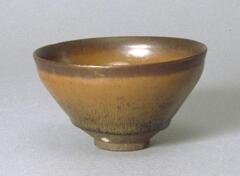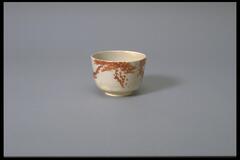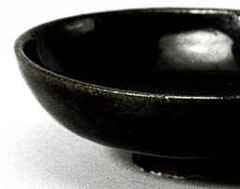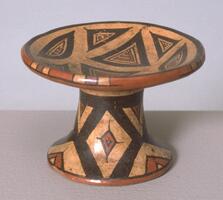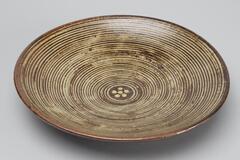Your account does not enable you to view this collection
11 Items in this Learning Collection
Collection Object
Collection Object
Collection Object
Collection Object
Collection Object
Collection Object
Collection Object
Collection Object
Copyright
All Rights Reserved
()
Your account does not enable you to view this collection
Red Raku ware tea bowl with imprinted leaf designs
Accession Number
1954/1.537
Title
Red Raku ware tea bowl with imprinted leaf designs
Artist(s)
Raku Tan'nyū
Object Creation Date
circa 1820 - 1840
Medium & Support
earthenware with red and gray glaze
Dimensions
3 15/16 x 4 3/4 x 4 3/4 in. (10 x 12 x 12 cm);4 5/8 x 5 3/8 x 5 3/8 in. (11.75 x 13.65 x 13.65 cm)
Credit Line
Bequest of Margaret Watson Parker
Label copy
Sen no Rikyû (1522–1591), tea master to Japan’s most powerful warlords in the late sixteenth century, championed the use of humble materials in the tea ceremony. Instead of expensive imported Chinese celadon or bronze flower vases, for example, he carved his own from bamboo in his own garden. Rikyû encouraged the Kyoto potter Chôjirô (1515–1592) to develop a new type of tea bowl, known as raku ware, formed by hand and fired in a simple, pit-like chamber. Chôjirô’s distinctive, thick-walled tea bowls set the standard for works by later generations of the Raku family, such as this tea bowl and UMMA 2000/1.30.
Over the centuries, three lines of tea schools directly descended from Sen no Rikyû. The successive heads of these three families often would hand-form their own tea bowls, which would then be glazed and fired by the then head of the Raku family. For an example of such a tea bowl, please see UMMA 1963/2.71, which is attributed to Sen Sôshu X, the tenth generation head of the Mushanokoji School of Tea.
From "Silk Road to Clipper Ship: Trade, Changing Markets, and East Asian Ceramics."
exhibited summer 2010
---
Raku Tan’nyû
Japan, 1795–1854
Red Raku ware tea bowl with stamped leaf designs
Edo period (1615–1868)
1820s–40s
Earthernware with red and gray glaze
Bequest of Margaret Watson Parker, 1954/1.537
Sen Rikyû (1522–1591), tea master to Japan’s most powerful warlords in the late sixteenth century, championed the use of humble materials in the tea ceremony. Instead of expensive imported Chinese celadon or bronze flower vases, for example, he carved his own vase from bamboo in his garden. Rikyû encouraged the Kyoto potter Chôjirô (1515–1592) to develop a new type of tea bowl, known as Raku ware, formed by hand and fired in a simple, pit-like chamber. Chôjirô’s distinctive, thick-walled tea bowls set the standard for works by later generations of the Raku family lineage of tea wares, such as this bowl.
(6/28/10)
Subject matter
Sen no Rikyû (1522–1591), tea master to Japan’s most powerful warlords in the late sixteenth century, championed the use of humble materials in the tea ceremony. Instead of expensive imported Chinese celadon or bronze flower vases, for example, he carved his own from bamboo in his own garden. Rikyû encouraged the Kyoto potter Chôjirô (1515–1592) to develop a new type of tea bowl, known as raku ware, formed by hand and fired in a simple, pit-like chamber. Chôjirô’s distinctive, thick-walled tea bowls set the standard for works by later generations of the Raku family, such as this tea bowl.
Physical Description
This rustic, earth tone ceramic tea bowl has a rough, natural feeling texture. Impressed into the outer sides of the tea bowl are the imprints of pine needles.
Primary Object Classification
Ceramic
Primary Object Type
tea bowl
Collection Area
Asian
Rights
If you are interested in using an image for a publication, please visit http://umma.umich.edu/request-image for more information and to fill out the online Image Rights and Reproductions Request Form.
Keywords
bowls (vessels)
ceramic ware (visual works)
tea (beverage)
tea bowls
1954/1.537
Title
Red Raku ware tea bowl with imprinted leaf designs
Artist(s)
Raku Tan'nyū
Object Creation Date
circa 1820 - 1840
Medium & Support
earthenware with red and gray glaze
Dimensions
3 15/16 x 4 3/4 x 4 3/4 in. (10 x 12 x 12 cm);4 5/8 x 5 3/8 x 5 3/8 in. (11.75 x 13.65 x 13.65 cm)
Credit Line
Bequest of Margaret Watson Parker
Label copy
Sen no Rikyû (1522–1591), tea master to Japan’s most powerful warlords in the late sixteenth century, championed the use of humble materials in the tea ceremony. Instead of expensive imported Chinese celadon or bronze flower vases, for example, he carved his own from bamboo in his own garden. Rikyû encouraged the Kyoto potter Chôjirô (1515–1592) to develop a new type of tea bowl, known as raku ware, formed by hand and fired in a simple, pit-like chamber. Chôjirô’s distinctive, thick-walled tea bowls set the standard for works by later generations of the Raku family, such as this tea bowl and UMMA 2000/1.30.
Over the centuries, three lines of tea schools directly descended from Sen no Rikyû. The successive heads of these three families often would hand-form their own tea bowls, which would then be glazed and fired by the then head of the Raku family. For an example of such a tea bowl, please see UMMA 1963/2.71, which is attributed to Sen Sôshu X, the tenth generation head of the Mushanokoji School of Tea.
From "Silk Road to Clipper Ship: Trade, Changing Markets, and East Asian Ceramics."
exhibited summer 2010
---
Raku Tan’nyû
Japan, 1795–1854
Red Raku ware tea bowl with stamped leaf designs
Edo period (1615–1868)
1820s–40s
Earthernware with red and gray glaze
Bequest of Margaret Watson Parker, 1954/1.537
Sen Rikyû (1522–1591), tea master to Japan’s most powerful warlords in the late sixteenth century, championed the use of humble materials in the tea ceremony. Instead of expensive imported Chinese celadon or bronze flower vases, for example, he carved his own vase from bamboo in his garden. Rikyû encouraged the Kyoto potter Chôjirô (1515–1592) to develop a new type of tea bowl, known as Raku ware, formed by hand and fired in a simple, pit-like chamber. Chôjirô’s distinctive, thick-walled tea bowls set the standard for works by later generations of the Raku family lineage of tea wares, such as this bowl.
(6/28/10)
Subject matter
Sen no Rikyû (1522–1591), tea master to Japan’s most powerful warlords in the late sixteenth century, championed the use of humble materials in the tea ceremony. Instead of expensive imported Chinese celadon or bronze flower vases, for example, he carved his own from bamboo in his own garden. Rikyû encouraged the Kyoto potter Chôjirô (1515–1592) to develop a new type of tea bowl, known as raku ware, formed by hand and fired in a simple, pit-like chamber. Chôjirô’s distinctive, thick-walled tea bowls set the standard for works by later generations of the Raku family, such as this tea bowl.
Physical Description
This rustic, earth tone ceramic tea bowl has a rough, natural feeling texture. Impressed into the outer sides of the tea bowl are the imprints of pine needles.
Primary Object Classification
Ceramic
Primary Object Type
tea bowl
Collection Area
Asian
Rights
If you are interested in using an image for a publication, please visit http://umma.umich.edu/request-image for more information and to fill out the online Image Rights and Reproductions Request Form.
Keywords
bowls (vessels)
ceramic ware (visual works)
tea (beverage)
tea bowls
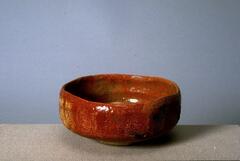

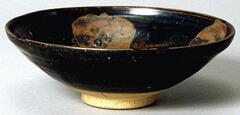
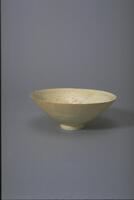
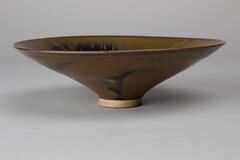
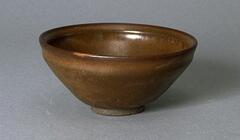

![It has a flared mouth. The side is tapering gently down to the base. It was brushed with white slip interior and outerior sides.<br />
<br />
Bowls of this kind were commonly used as burial accessories in the 15th century Joseon; many have been excavated. This bowl has been rapidly spun and brush-painted with white slip on its inner and outer surfaces. The large amount of sand mixed with the clay has produced a rough texture. Traces of clay supports remain on both the inner base and the rim of foot, indicating that this bowl was stacked among other bowls while separated by clay spurs during firing. The glaze was fused well, producing a glossy surface.<br />
[Korean Collection, University of Michigan Museum of Art (2014) p.155] It has a flared mouth. The side is tapering gently down to the base. It was brushed with white slip interior and outerior sides.<br />
<br />
Bowls of this kind were commonly used as burial accessories in the 15th century Joseon; many have been excavated. This bowl has been rapidly spun and brush-painted with white slip on its inner and outer surfaces. The large amount of sand mixed with the clay has produced a rough texture. Traces of clay supports remain on both the inner base and the rim of foot, indicating that this bowl was stacked among other bowls while separated by clay spurs during firing. The glaze was fused well, producing a glossy surface.<br />
[Korean Collection, University of Michigan Museum of Art (2014) p.155]](/media/W1siZiIsIjIwMjIvMDUvMjUvN2wwZnA4dXE4NV9kZWZhdWx0LmpwZyJdLFsicCIsInRodW1iIiwiMjQweDIwMCJdXQ?sha=8feb467e9a78db04)
![It has large-mouth and the wall slants toward the bottom in an almost straight line. It was deformed during firing.<br />
<br />
The inner and outer surfaces of this bowl are brushed with white slip. Traces of refractory spurs remain in five places on the inner base and the foot. The foot is glazed on the rim as well. This is a low-grade object with many iron-brown spots on both its inner and outer surfaces. A note from collector is adhered to the reverse side of the bowl, and it reads, “19629, corée, Hakéme,” “朝鮮刷毛目, 三百年.”<br />
[Korean Collection, University of Michigan Museum of Art (2014) p.156] It has large-mouth and the wall slants toward the bottom in an almost straight line. It was deformed during firing.<br />
<br />
The inner and outer surfaces of this bowl are brushed with white slip. Traces of refractory spurs remain in five places on the inner base and the foot. The foot is glazed on the rim as well. This is a low-grade object with many iron-brown spots on both its inner and outer surfaces. A note from collector is adhered to the reverse side of the bowl, and it reads, “19629, corée, Hakéme,” “朝鮮刷毛目, 三百年.”<br />
[Korean Collection, University of Michigan Museum of Art (2014) p.156]](/media/W1siZiIsIjIwMjIvMDUvMjUvOGwxcWg2N25pdF9kZWZhdWx0LmpwZyJdLFsicCIsInRodW1iIiwiMjQweDIwMCJdXQ?sha=35d40b809bdc1c1f)
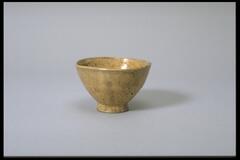
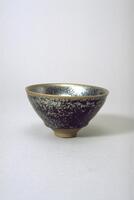

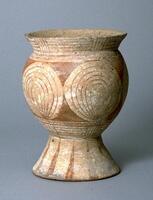

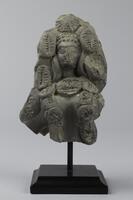

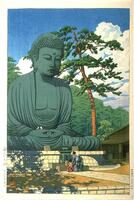
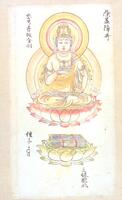
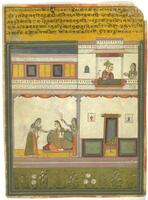
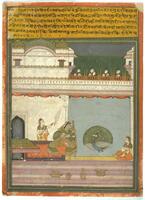


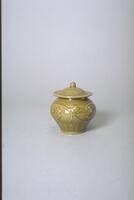
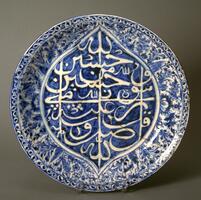
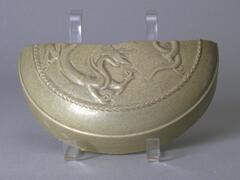
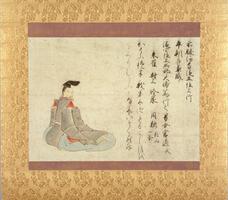
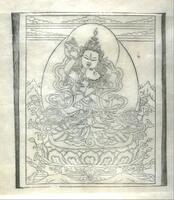

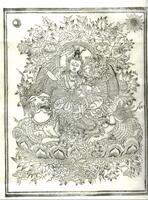

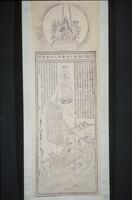






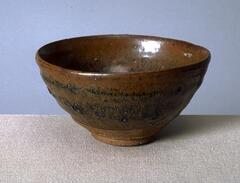
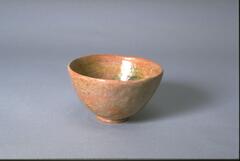
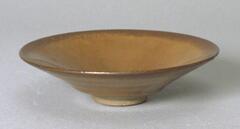
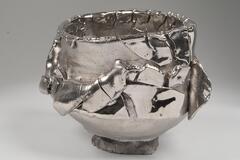
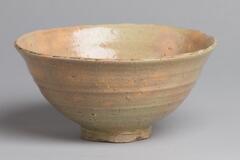
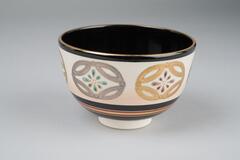
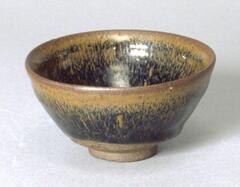
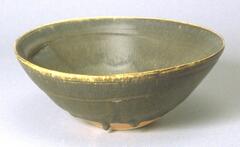

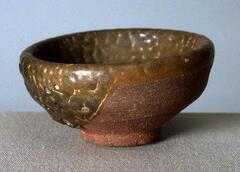
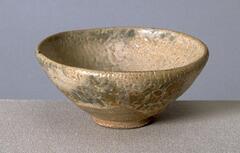
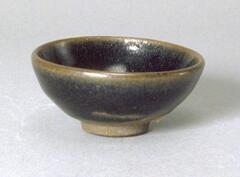
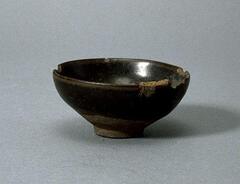
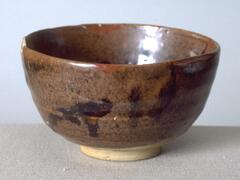
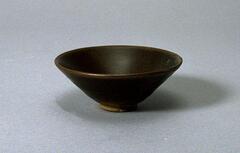
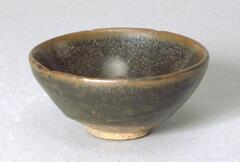

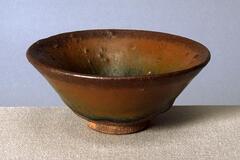
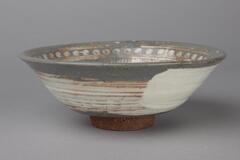
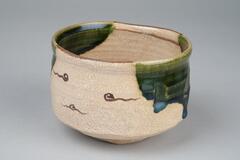
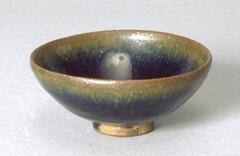


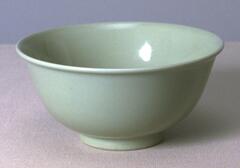

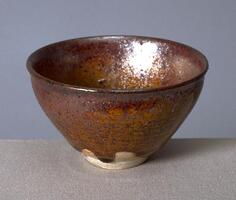
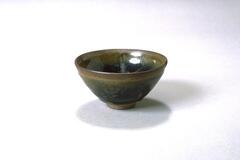

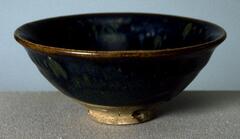
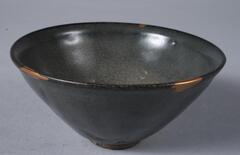
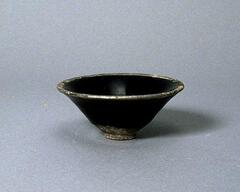
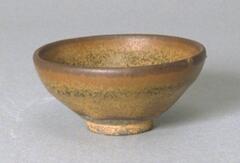
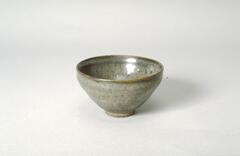

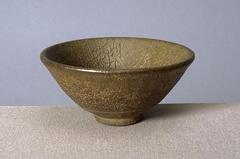
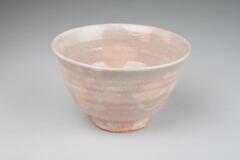
![Stoneware bowl with stamped rope-curtain design covered by a white slip and colorless glaze. A stylized inlaid chrysanthemum blossom decorates the center of the bowl, surrounded by a band of petals.<br />
<br />
This buncheong bowl with stamped design was maily supplied to government offices in the 15th century. It is decorated with a lotus flower on the inner base surrounded by lotus petals, butterflies and rows of dots on the inner wall. The outer wall, too, is filled with rows of dots. It was poorly sintered and the glaze applied to the lower part of the body is not melted in parts. The foot is not glazed and exposes the clay body.<br />
[Korean Collection, University of Michigan Museum of Art (2014) p.147] Stoneware bowl with stamped rope-curtain design covered by a white slip and colorless glaze. A stylized inlaid chrysanthemum blossom decorates the center of the bowl, surrounded by a band of petals.<br />
<br />
This buncheong bowl with stamped design was maily supplied to government offices in the 15th century. It is decorated with a lotus flower on the inner base surrounded by lotus petals, butterflies and rows of dots on the inner wall. The outer wall, too, is filled with rows of dots. It was poorly sintered and the glaze applied to the lower part of the body is not melted in parts. The foot is not glazed and exposes the clay body.<br />
[Korean Collection, University of Michigan Museum of Art (2014) p.147]](/media/W1siZiIsIjIwMjIvMDkvMjQvOWRtNDIyZTcyX2RlZmF1bHQuanBnIl0sWyJwIiwidGh1bWIiLCIyNDB4MjAwIl1d?sha=0b90e10dcc5f13d1)

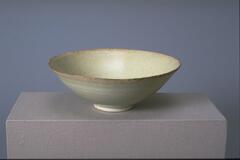
![<p>This is an undecorated bowl with diagonally flaring out sides. On the outer base and rim of the foot remain traces of refractory spur marks. The bowl was oxidized in the kiln, producing a green-brown hue, while the interior contains large bubbles. The color of its glaze is similar to that of other vessels excavated from sedimentary layers of refuse pile at celadon kilns in Goyang-si, Gyeonggi-do.<br />
[<em>Korean Collection, University of Michigan Museum of Art </em>(2014) p.101]</p>
<br />
It has an outwardly flared rim and steep side. A yellow brownish glaze is applied. The clay contains some impurities and the foot is relatively high. There is four spur-marks on the interior. <p>This is an undecorated bowl with diagonally flaring out sides. On the outer base and rim of the foot remain traces of refractory spur marks. The bowl was oxidized in the kiln, producing a green-brown hue, while the interior contains large bubbles. The color of its glaze is similar to that of other vessels excavated from sedimentary layers of refuse pile at celadon kilns in Goyang-si, Gyeonggi-do.<br />
[<em>Korean Collection, University of Michigan Museum of Art </em>(2014) p.101]</p>
<br />
It has an outwardly flared rim and steep side. A yellow brownish glaze is applied. The clay contains some impurities and the foot is relatively high. There is four spur-marks on the interior.](/media/W1siZiIsIjIwMjIvMDUvMjUvMnhtbDducjBocl9kZWZhdWx0LmpwZyJdLFsicCIsInRodW1iIiwiMjQweDIwMCJdXQ?sha=ab0ce1dba1be4d21)
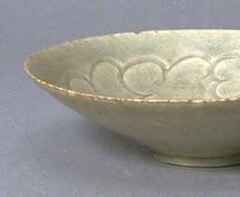
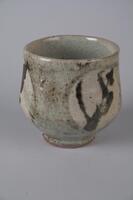
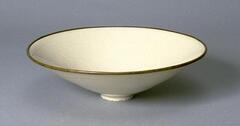
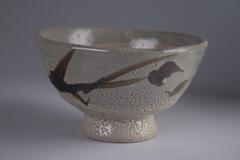
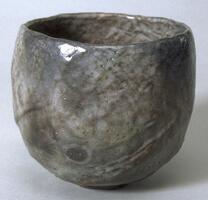
![Stoneware tea bowl with slightly flaring lip, white slip hakame design and colorless glaze.<br />
<br />
The inner and outer surfaces of this buncheong bowl have been brushed with white slip. Its inner base retains traces of seven spurs, while the uneven application of glaze has exposed the unglazed body. The glaze itself was fairly well fused. The bowl is intact without damage.<br />
[Korean Collection, University of Michigan Museum of Art (2014) p.156] Stoneware tea bowl with slightly flaring lip, white slip hakame design and colorless glaze.<br />
<br />
The inner and outer surfaces of this buncheong bowl have been brushed with white slip. Its inner base retains traces of seven spurs, while the uneven application of glaze has exposed the unglazed body. The glaze itself was fairly well fused. The bowl is intact without damage.<br />
[Korean Collection, University of Michigan Museum of Art (2014) p.156]](/media/W1siZiIsIjIwMjIvMDkvMjQvNm9xY20waHdlX2RlZmF1bHQuanBnIl0sWyJwIiwidGh1bWIiLCIyNDB4MjAwIl1d?sha=36b91ee5facf512c)
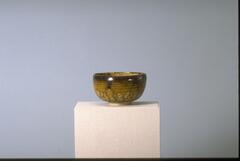
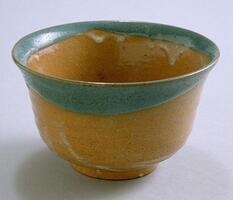




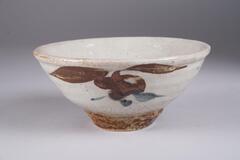
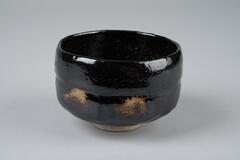
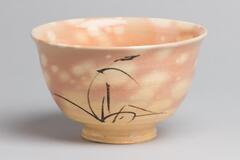

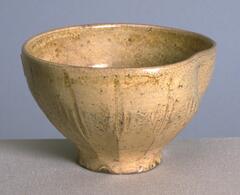
![<p>This bowl exemplifies early-tenth century celadon forms influenced by Chinese Yue ware. It has a halo-shaped foot (haemurigup), a characteristic of Yue ware. It is a high-quality celadon made from fine clay, coated by highly transparent glaze. Surface is plain while displaying crackles on its inner surface and parts of its outer surface. Many similar vessels were excavated from the Kilns no. 9 and no. 10 at Yongun-ri, Gangjin-gun, Jeollanam-do. Refractory spur marks created during firing remain in five places on the rim of the foot.<br />
[<i>Korean Collection, University of Michigan Museum of Art </i>(2014) p.88]</p>
Stoneware tea bowl with celadon glaze. <p>This bowl exemplifies early-tenth century celadon forms influenced by Chinese Yue ware. It has a halo-shaped foot (haemurigup), a characteristic of Yue ware. It is a high-quality celadon made from fine clay, coated by highly transparent glaze. Surface is plain while displaying crackles on its inner surface and parts of its outer surface. Many similar vessels were excavated from the Kilns no. 9 and no. 10 at Yongun-ri, Gangjin-gun, Jeollanam-do. Refractory spur marks created during firing remain in five places on the rim of the foot.<br />
[<i>Korean Collection, University of Michigan Museum of Art </i>(2014) p.88]</p>
Stoneware tea bowl with celadon glaze.](/media/W1siZiIsIjIwMjIvMDkvMjQvMXB2aXlzcnZpZF9kZWZhdWx0LmpwZyJdLFsicCIsInRodW1iIiwiMjQweDIwMCJdXQ?sha=7ddc9c1585910d07)

